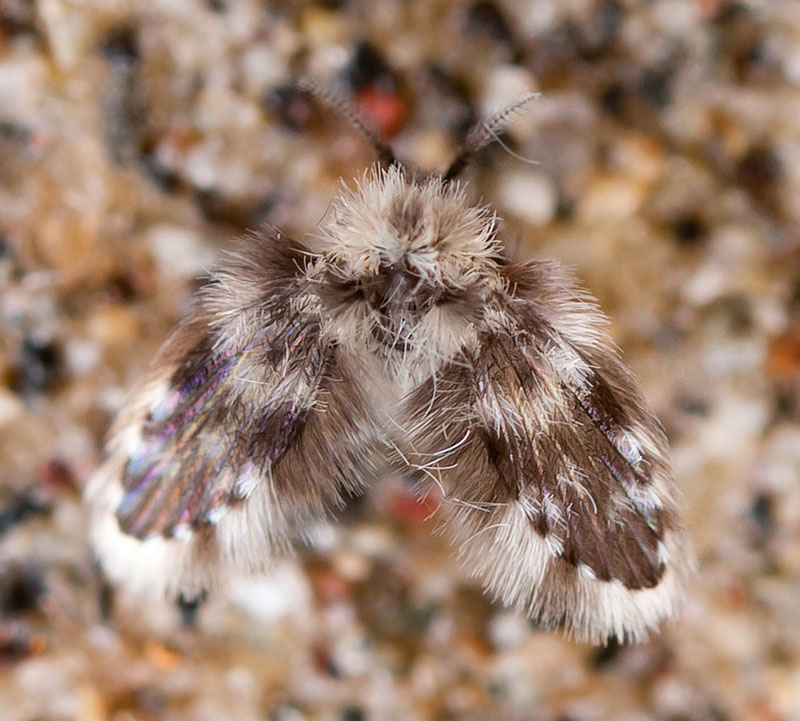Diptera.info :: Identification queries :: Diptera (adults)
Who is here? 1 guest(s)
|
Psychodidae?
|
|
| Pentti Ketola |
Posted on 02-08-2013 19:31
|
|
Member Location: Posts: 4986 Joined: 04.02.10 |
Hi, can anyone help me identify these Psychodidae? I take the photo on 2 August 2013 Kokkola, Finland. Size 3-4mm. Regards Pentti. Pentti Ketola attached the following image:  [113.06Kb] Edited by Pentti Ketola on 02-08-2013 19:32 |
| Sundew |
Posted on 03-08-2013 00:48
|
|
Member Location: Berlin and Baden-Württemberg, Germany Posts: 3916 Joined: 28.07.07 |
These little animals are so lovely, and they look so peculiar - it is a pity that most of them cannot be identified from a photo. Those with big white wing parts I suppose to belong to Pericoma or Pneumia or Ulomyia. A recent paper (http://www.resear...hodidae%29) says all these genera are polyphyletic, so taxonomy has been unsettled up to now. |
|
|
|
| Pentti Ketola |
Posted on 03-08-2013 06:20
|
|
Member Location: Posts: 4986 Joined: 04.02.10 |
Thank you very much for your help. Pentti. |
| Gunnar M Kvifte |
Posted on 05-08-2013 13:14
|
|
Member Location: Kassel, Germany Posts: 436 Joined: 18.08.09 |
Other European genera in which black and white colour patterns occur are for example Panimerus, Parabazarella and Tonnoiriella - for many species, however, the colours are unknown in living specimens because the hairs typically are shed when the animal is collected. If you have collected the specimen, I will be happy to examine it for you and include it in the European Psychodid picture library I am working on, but if not this image will have to be "Psychodinae indet."... The paper by Espindola et al. uses only mitochondrial DNA genes with low phylogenetic utility, so it would be premature to make desicions based on it... There appear to be some conserved regions that give indications of higher-level relationships, but the variable regions seem too variable to track medium-age divergences. Some of the relationships are, however, also supported by morphology - the isolated position of Pneumia stammeri, for instance (this species is separate from Pneumia s.str. in unpublished DNA analyses I have made as well). The study is, however, too limited in gene sampling (as well as the geographic and taxonomic sampling) to be more than a first step towards a molecular phylogeny of Psychodids. Curler & Moulton (2012: DOI: 10.1111/j.1365-3113.2012.00634.x) is another, which uses far better genes, but no study has yet to feature both a representative sample of taxa and a set of multiple informative genes. |
|
|
|
| Pentti Ketola |
Posted on 05-08-2013 16:21
|
|
Member Location: Posts: 4986 Joined: 04.02.10 |
Unfortunately I didn't collect it, it got away. Regards, Pentti |
| Jump to Forum: |
















